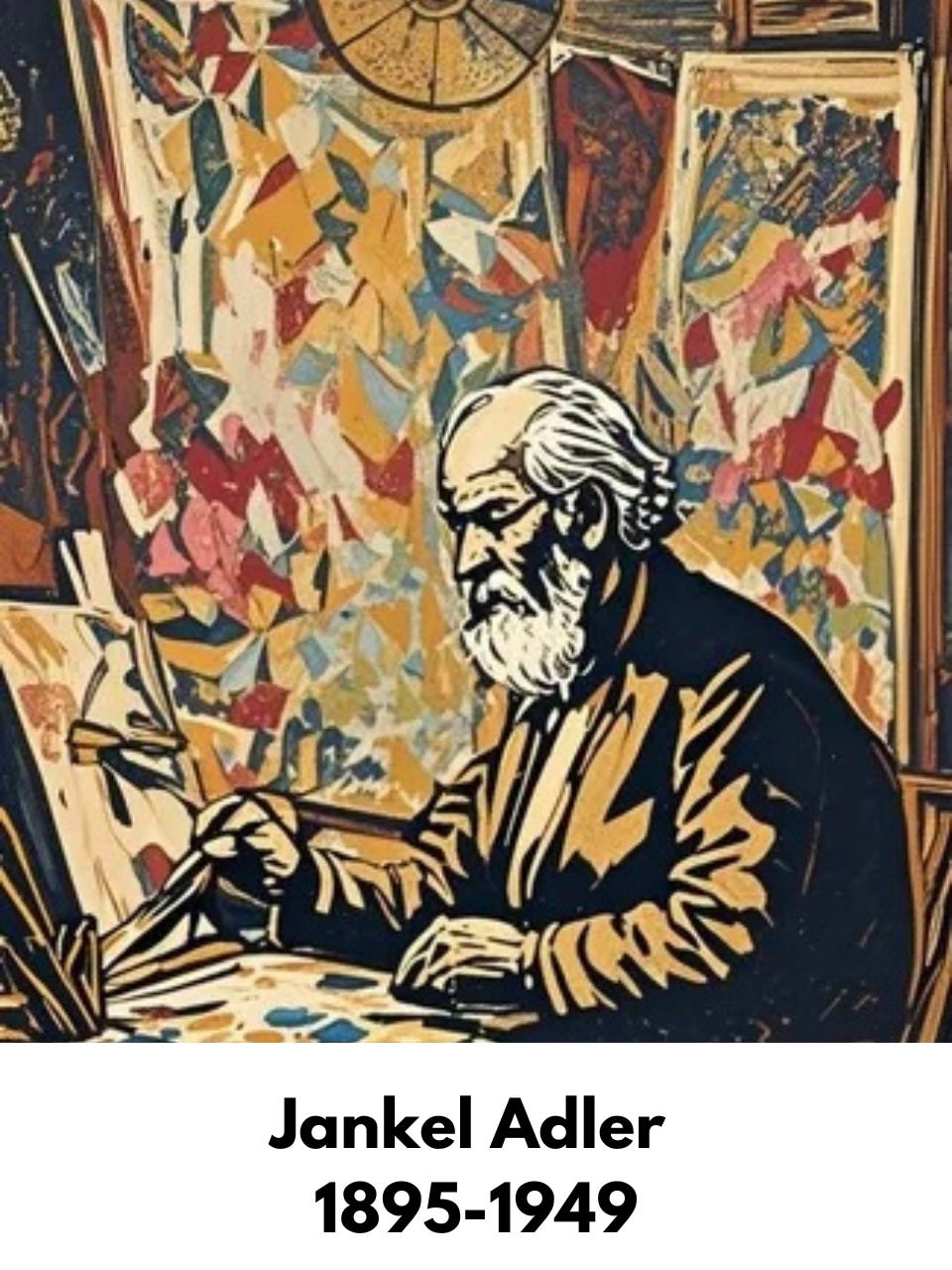From War Zones to Picasso's Studio: This Artist Redefined Modern Art. 🤯🖌️
Play & learn about Jankel Adler's arty refugee experience 🎮
Click here to play & learn.
Back Story
Jankel Adler, a Polish-Jewish artist, was a key figure in the 20th-century avant-garde movement. Having lived through both World Wars, his experiences left a lasting imprint on his work, which often reflected themes of exile, loneliness, and melancholy, particularly in his later years.
Born in 1895 in Tuszyn, Poland, Adler was the eighth of twelve children. In 1912, he began studying engraving in Belgrade before moving to Germany in 1913, where he attended the School of Arts and Crafts in Barmen (now part of Wuppertal). Despite the turmoil of World War I, he remained dedicated to his studies. During the war, he was conscripted into the Russian army but later returned to Poland in 1918. That same year, he co-founded Yung-Yidish, a Łódź-based artistic group dedicated to expressing Jewish identity through modernist art.
Throughout the 1920s, Adler became deeply involved in the European avant-garde movement, forming friendships with renowned artists such as Otto Dix and Paul Klee—the latter becoming a mentor who profoundly influenced his style. By 1930, Adler had established himself as a leading figure in modern art. However, with the rise of the Nazis, his work was labeled Entartete Kunst (degenerate art), and in 1937, it was included in the infamous Degenerate Art exhibition in Munich. Forced to flee Germany, Adler moved between several European countries, eventually settling in Paris, where he met Picasso. This encounter profoundly influenced his style, leading him toward greater abstraction, characterized by bold forms, distorted figures, and richly textured surfaces seen in his later work.
With the outbreak of World War II in 1939, Adler joined the Polish Army in France and was evacuated to Scotland in 1940. Due to health issues, he was discharged in 1941 and later moved to London, where he continued painting despite wartime hardships. His later works, often imbued with themes of exile and resilience, reflect both his personal struggles and his unwavering artistic spirit. Adler passed away in 1949 in Aldbourne, England, leaving behind a legacy that continues to inspire modern artists today.
In this post Jingwen highlights the arty refugee experience of Jankel Adler. She is a citizen journalist on a placement with us organised by Oxford University Career Services. She also organised the micro game to make the journalistic experience interactive.
Thank you for reading an A4R 🎨 Post. Don’t forget to visit our gift shop here. Every purchase scales our impact and pays our bills.





